The golden light of October cottonwoods in the canyons was as I remembered. The year was 2002, and I had returned to the Utah canyon country for a rendezvous with a crowd of friends. We had been rangers together during the 1970s and 1980s, employees of the National Park Service or the Bureau of Land Management. Our gathering place was Sand Island, not far west of the town of Bluff.
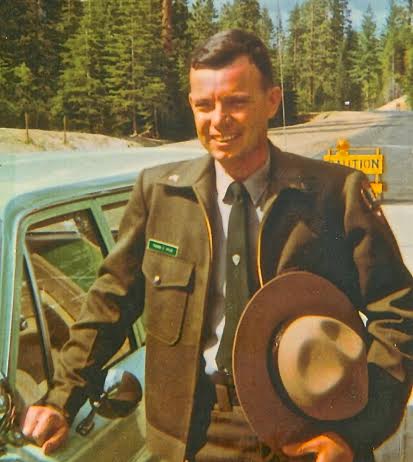 We told stories under the trees, on the trail, and around the campfire. On one of those days, I was talking to Lynell Shalk, a former ranger with the Bureau of Land Management. I said, “This is the most beautiful place on earth, the center of the world.”
We told stories under the trees, on the trail, and around the campfire. On one of those days, I was talking to Lynell Shalk, a former ranger with the Bureau of Land Management. I said, “This is the most beautiful place on earth, the center of the world.”
She said, “You know, don’t you, that you just spoke the first line from Desert Solitaire?”
“What?”
“This is the most beautiful place on earth.”
She was right, but I hadn’t read the book in years. I had long ago fallen in love with this country, and I was speaking for myself. Even so, Ed Abbey had much to do with it.
Years earlier, on an April afternoon in Yosemite Valley, I arrived at the ranger office for the evening shift and sorted through my mail slot. A letter was addressed to “Supt; Yosemite National Park” and dated April 4, 1971. The return address was Box 558, Kanab, Utah. No self-respecting secretary could have typed it. The letters on the page were evidence of uneven finger pressure on the keys. The typewriter in question was old, the words on paper indicating typefaces worn and in need of cleaning.
“LIFE Magazine has asked me to write a short article about the problems park rangers have in handling large crowds during holiday visitations, and in general on the ranger-as-policeman.” The writer wanted to “accompany the rangers on some of their patrols” and added that he himself was an ex-seasonal ranger with “a reasonable understanding of the peculiar nature of part of a ranger’s work and considerable empathy for his special problems.” He would be in the park over the upcoming Easter weekend, April 11th to the 14th. The name of the letter writer—Edward Abbey— meant nothing to me.
One of my superiors had written on the letter: “Suggest that our man be Tom Wylie or Don Utterback.” My name was framed in red. Did I really want to ride around with some reporter? On the other hand, he had been a ranger himself, and I needed a change of pace.
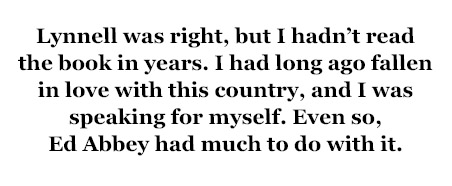
When I met Mr. Abbey the next day at the ranger office, he was dressed in slacks and a tweed sport coat. He wore no tie, and his shirt was unbuttoned at the collar. His beard was moderately short and neatly trimmed. A hint of gray showed in the beard. His face was weathered, and there was a squint to eyes whose color might have been blue. Polite and soft-spoken, he reminded me of a college professor. We arranged to meet at the afternoon shift change, and he drove away in a blue Pontiac sedan to check in at Yosemite Lodge. A good-looking, well-dressed woman sat beside him.
Abbey showed up for patrol in old jeans, a khaki shirt, and hiking boots that had seen their share of trails. He had left his professor image hanging on the clothes rod in his room at the Lodge. In the patrol car I asked him about his ranger work. I recall only that he had worked at Arches National Monument. He was friendly enough but didn’t talk much, especially about himself. We didn’t have a lot of time to talk anyway, and his job was to ply me with questions. He mostly watched and listened and made notes. In my own notes I jotted down license plate numbers, names and addresses, times of contacts, suspicions, and a few incident details¾rough work notes. There is no mention of Abbey in them. Not long into the first night of patrol, I realized that having him with me was going to be no trouble at all. He never got in my way, and I appreciated that.
Three nights earlier in Camp 15, I had spotted a man working on the left- front headlight of an old 1955 Porsche with faded yellow paint and a dented left door. He was working under the equivalent of a streetlight. The whole scene seemed out of place. There was a subtle shift in his manner the moment he noticed my patrol car. On foot, I quieted campers, visited at campfires, and worked my way toward the auto repairman. Before I reached him I saw the Porsche leaving. I returned to my car and followed. The driver turned the wrong way onto the one-way road at the campground entrance, and I pulled him over. He said that he wasn’t camped there. “I’m just visiting friends,” he said.
I called the dispatcher to run a check on the man and his car. Nothing. Most park visitors would have received a verbal warning from me, but this man had aroused my suspicion. For my part, I had learned to never reveal my suspicions. I wrote a warning ticket and let him go. The information might or might not become part of a case file.
The next morning a man staying at Yosemite Lodge came into the ranger office to report the overnight removal and theft of auto parts and accessories from his 1955 Porsche. A left front headlight and trim ring were among the items taken off the car.
Now, at 9:30 in the evening with Abbey in the passenger seat, there was the yellow Porsche again in Camp 15. We walked into the campsite. With what I knew and what I could see in plain sight there in the campfire light and flashlight beam, I had caught the man with stolen goods. I pulled out my handcuffs. Score one for the “tree fuzz.”
The weekend and Edward Abbey came and went. A few days later, Warren White, a fellow ranger, 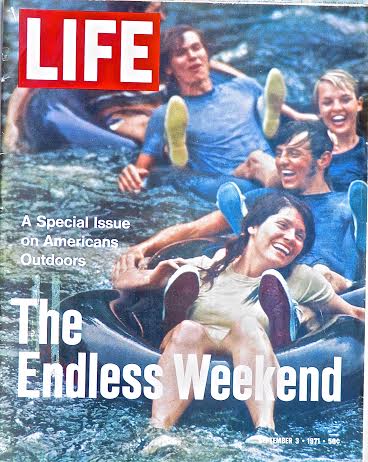 asked me, “Do you know about Ed Abbey? Have you read his book?”
asked me, “Do you know about Ed Abbey? Have you read his book?”
“Yes and no. He’s some guy writing an article for LIFE. — What book?”
“Desert Solitaire.” Warren said that Abbey had something different to say. He urged me to read it and I did.
Later, when I left Yosemite, Warren gave me a paperback copy of Desert Solitaire. The book is old now, the pages yellowed and well thumbed. Inside the cover, Warren had written, “Caution: May cause anarchy ― but also love of the desert.” Warren was right in his assessment, though I do not admit to any culpable act of anarchy.
When Abbey’s story “The Park That Caught Urban Blight” appeared in LIFE’s September 3rd (1971) issue at the end of the summer, someone two or three steps above me in rank complained about Abbey and what he had written. As for me, I thought Ed Abbey wrote the truth.
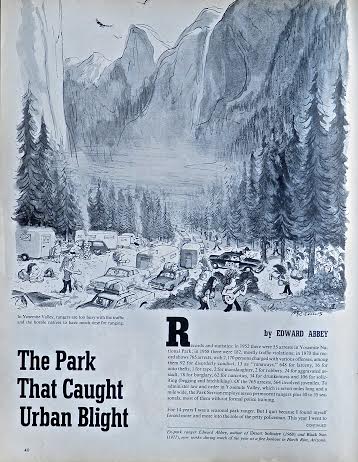 I had never seen the Moab country, but Desert Solitaire planted a seed. I wanted to live and work in one of the parks there, but jobs weren’t available. I applied to other parks and was fortunately turned down. The following summer a job opening at Canyonlands National Park caught my eye. One year after Abbey’s article was published in LIFE, I arrived in Moab with my family and went to work as the district ranger at Island in the Sky. The power of Desert Solitaire to draw a person to that corner of Utah had manifested itself. I would learn I was not the only one.
I had never seen the Moab country, but Desert Solitaire planted a seed. I wanted to live and work in one of the parks there, but jobs weren’t available. I applied to other parks and was fortunately turned down. The following summer a job opening at Canyonlands National Park caught my eye. One year after Abbey’s article was published in LIFE, I arrived in Moab with my family and went to work as the district ranger at Island in the Sky. The power of Desert Solitaire to draw a person to that corner of Utah had manifested itself. I would learn I was not the only one.
Riding on patrol with Ed Abbey was a chance encounter. It has little real significance except to me, but people who know about Abbey want to hear the story. I was merely a participant in the encounter. It wasn’t Ed Abbey in person who influenced me. It was his book Desert Solitaire that altered my life. For the curious reader, Abbey’s article in LIFE was later published in The Journey Home in a slightly expanded form. It is called “Return to Yosemite: Tree Fuzz vs. Freaks.” I am chronicled there as “Ranger Tom Wylie, supervisor of the night shift”—a sort of limited immortality.
Abbey and I crossed paths again at Island in the Sky. Another time I saw him in Moab with his young daughter at the high-school gym where the Utah Symphony was playing in concert. At Ken Sleight’s bookstore, Abbey and illustrator Robert Crumb signed my tenth-anniversary copy of The Monkey Wrench Gang. That was it. Sometimes the crossing of paths leads to acquaintance or even friendship, but it didn’t happen. I have been one both blessed and afflicted by reticence, and I just didn’t want to bother the man.
A year or so after the Sand Island gathering, I read Desert Solitaire again. Not only had I used the first sentence in Desert Solitaire that day at Sand Island, I also had unconsciously appended to it another phrase from the book: “the center of the world.” Ed Abbey speaks from the page and stakes his claim: “I put on a coat and step outside. Into the center of the world, God’s navel, Abbey’s country, the red wasteland.”
More than I had realized, Abbey’s book changed how I looked at and lived in the world. Ed Abbey was and is a hot coal in my conscience. I became his “moderate extremist,” though assuredly more moderate than extreme.
Certainly I owe Ed something for the best years of my life—12 years and a few months in the canyon country. I am still tethered to this land. It is home even though I have been gone for more than twice those 12 years. I studied and learned the land, not only from the written word but also from wandering to and fro in it, often alone. The place became a part of me.
I want to be walking in some wild canyon, or across some plateau or mesa top, or to go adrift down one of the great canyon rivers, communing with ravens, kestrels, and ghosts. Ghosts of ancients who painted and carved on the canyon walls. Ghosts from the sheepherder camps and the cowboy camps. Ghosts of memory.
I return to Abbey’s country as often as I can. When I go there, it is most like coming home to the woman I love after a long absence. It is still the most beautiful place on earth. It is still the center of the world.
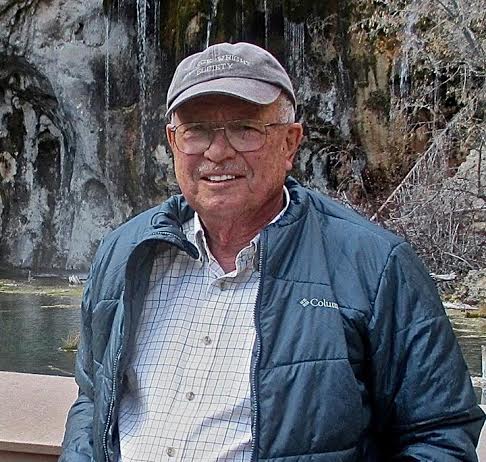 TOM WYLIE is retired from the National Park Service after a distinguished career and lives with his wife in Centennial, Colorado. On a personal note, I was a seasonal at Arches NP when Tom worked across the road at Canyonlands. He was the ranger we all wanted to work for. Tom Wylie has always been one of ‘the good guys.’…JS
TOM WYLIE is retired from the National Park Service after a distinguished career and lives with his wife in Centennial, Colorado. On a personal note, I was a seasonal at Arches NP when Tom worked across the road at Canyonlands. He was the ranger we all wanted to work for. Tom Wylie has always been one of ‘the good guys.’…JS
To read the PDF version of this article, click here.
To comment, scroll to the bottom of the page.
Don’t Forget the Zephyr ads! All links are hot!

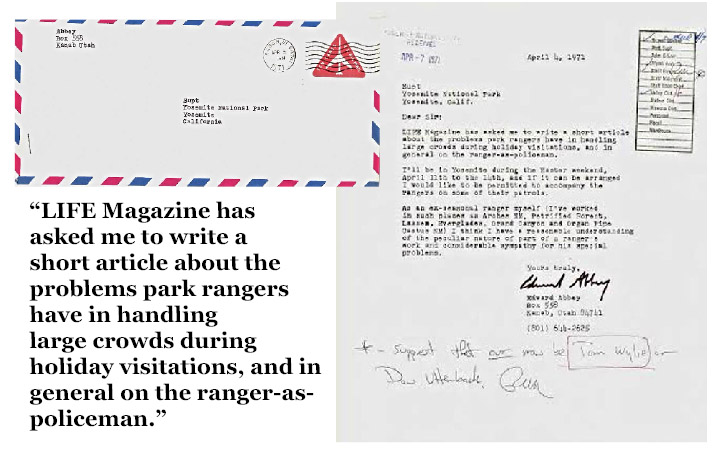
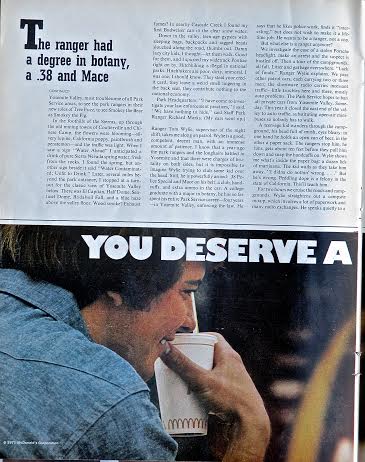
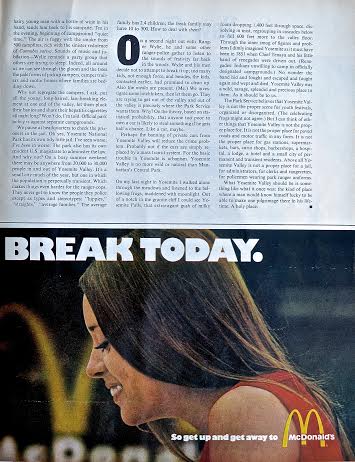


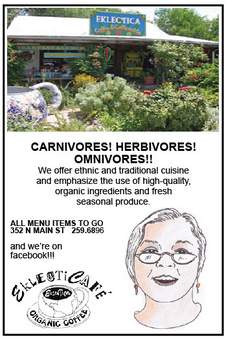
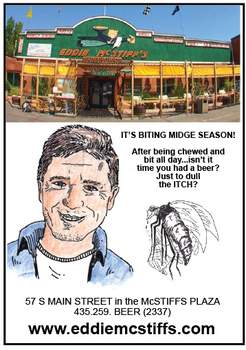

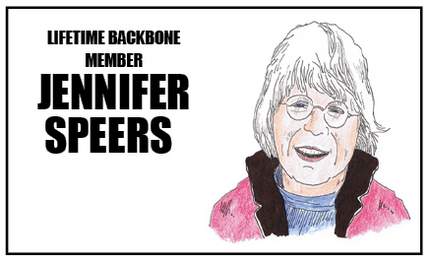
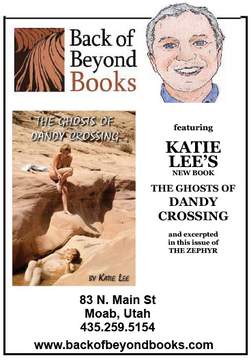
Tom: Beautifully written. I’ve been anxious to read your piece ever since you talked about it a few months back. It was a pleasure meeting you at Pack Creek for the 25th of Abbey’s death. I suspect you have many more stories to tell from your time with the Park Service. Keep writing …
When Ed Abbey hits you with a literary arrow, it goes in deep.
Thank you, Tom Wylie.
I visited Arches NP before I read Abbey and felt like my soul was leaving my body. After I read “Desert Solitaire” I understood why. Well written and interesting article. Thanks.
Thank you for your article. Abbey, Desert Solitare and the land of the red dirt lit the coal for me, and once lit, it burns forever. Thank you.
I very much appreciate the comments shared here. I am especially glad to hear from Anne Urbanek, a good friend from my Canyonlands days.
I was given Desert Solitaire from my now long disappeared brother. I believe it was 1973 .i read it but didn’t connect. Then in the summer of 73 as a 19 yr old, I got a job in Utah for the summer and i never lived in Ohio again. I did connect finally to Abbeys words while on a camping trip to the desert. And my life has never been the same. I live in Utah County and have since 73…but my heart is in the red desert.
Tom– by any chance did you ever work at Mesa Verde? I met a ranger maybe 5 years ago in Colorado and had a discussion with him. I only remember that he worked there at one time. It’s just that you face looks familiar.
To Pat Butler: No, I never worked at Mesa Verde. I retired in 2002. I’ve visited Mesa Verde many times and it would have been a good place to work.
Thx TW for the inspiration and continuum on Abbey’s work….do u kno if there are any web pictures of him and Newcomb on their Colo River run b4 the dam was completed? Thx…Tom Rafferty in louisville colorado.
It was when Tom Wylie was Ed’s NPS chaperone in 1971 that I ran into Ed after my evening program at Yosemite Lodge. I recognized Ed by sight. I had previously met him in Zion in 1969 where I Worked as a seasonal park ranger-naturalist. I invited Ed on a day hike up into Hidden Canyon.
In Yosemite, that April of 1971, I invited Ed out for a night hike to observe and experience moonbows at the base of the Lower Yosemite Fall. He wrote about that experience in Journey Home, (but didn’t mention that he was there with me).
I think Desert Solitaire is just as relevant today as it was when first printed. I was just in Bluff, UT this past April and visited Howenweep National Monument, Bears Ears National Monument, Moki Dugway, Mexican Hat, Monument Valley, Goosenecks of the San Juan, Muley Point, Valley of the Gods, and Sand Island. It is indeed the Center of the Earth!
A lot of water under the dam since Tom and I were congenial roommates at the Intro to Park Operations course at Albright in the fall of ’66. I’m sorry our career paths did not cross, his being west and mine in the east.
…when i first came to the southwest 40 years ago, i realized that for whatever reason, no matter where i lived, i was home… i had not heard of abbey before that, but i read his writings soon afterwards, and it all made sense then….your article is wonderfully written, and thanks for such great memories, both yours and mine that this awakened!